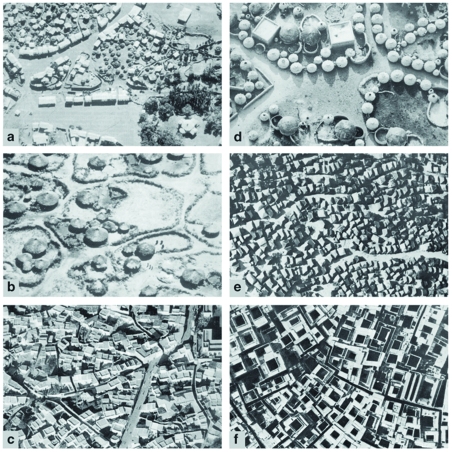Benin City’s planning and design was done according to careful rules of symmetry, proportionality and repetition now known as fractal design. The mathematician Ron Eglash, author of African Fractals – which examines the patterns underpinning architecture, art and design in many parts of Africa;
notes that the city and its surrounding villages were purposely laid out to form perfect fractals, with similar shapes repeated in the rooms of each house, and the house itself, and the clusters of houses in the village in mathematically predictable patterns.





Settlement structures of ancient Africa: a Soqota, Ethiopia, b a village in Ethiopia, c Hara, Ethiopia, d Labbezanga, Niger, e Old Zanzibar, f Old Marrakesh – Pohl, Göran. & Nachtigall, Werner. (2015). Biomimetics for Architecture & Design Nature – Analogies – Technology. 1st ed. 2015.


As he puts it: “When Europeans first came to Africa, they considered the architecture very disorganised and thus primitive. It never occurred to them that the Africans might have been using a form of mathematics that they hadn’t even discovered yet."
notes that the city and its surrounding villages were purposely laid out to form perfect fractals, with similar shapes repeated in the rooms of each house, and the house itself, and the clusters of houses in the village in mathematically predictable patterns.





Settlement structures of ancient Africa: a Soqota, Ethiopia, b a village in Ethiopia, c Hara, Ethiopia, d Labbezanga, Niger, e Old Zanzibar, f Old Marrakesh – Pohl, Göran. & Nachtigall, Werner. (2015). Biomimetics for Architecture & Design Nature – Analogies – Technology. 1st ed. 2015.


As he puts it: “When Europeans first came to Africa, they considered the architecture very disorganised and thus primitive. It never occurred to them that the Africans might have been using a form of mathematics that they hadn’t even discovered yet."
